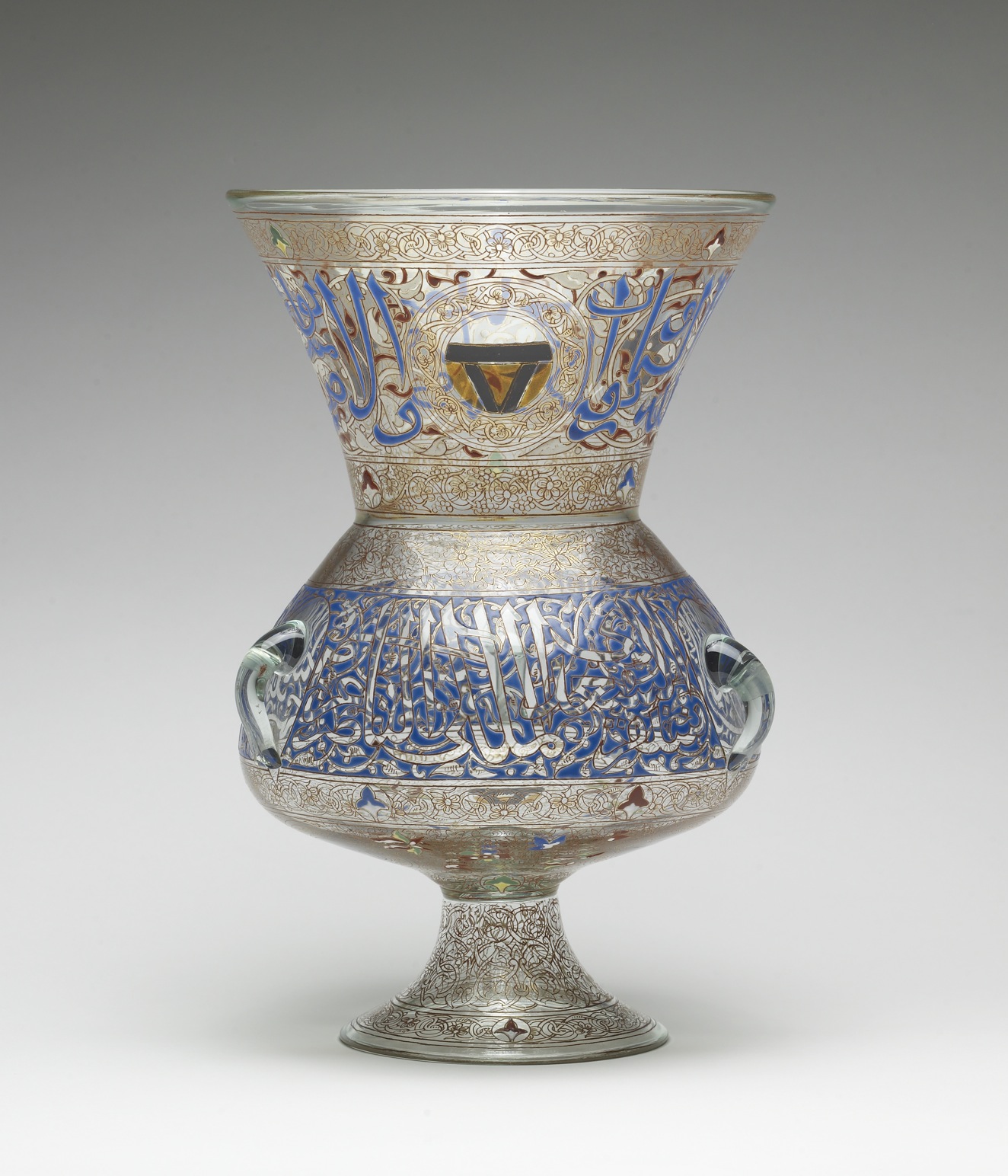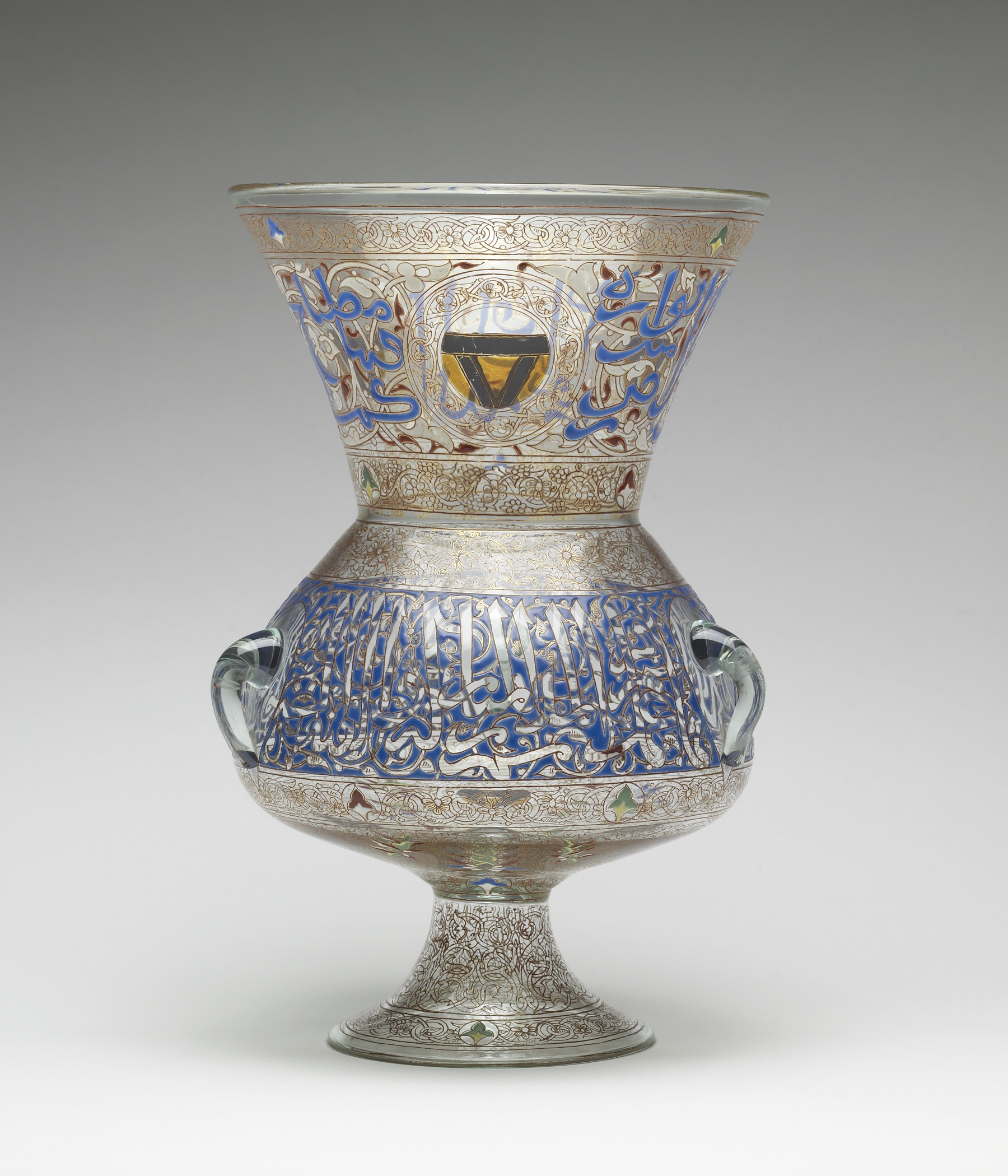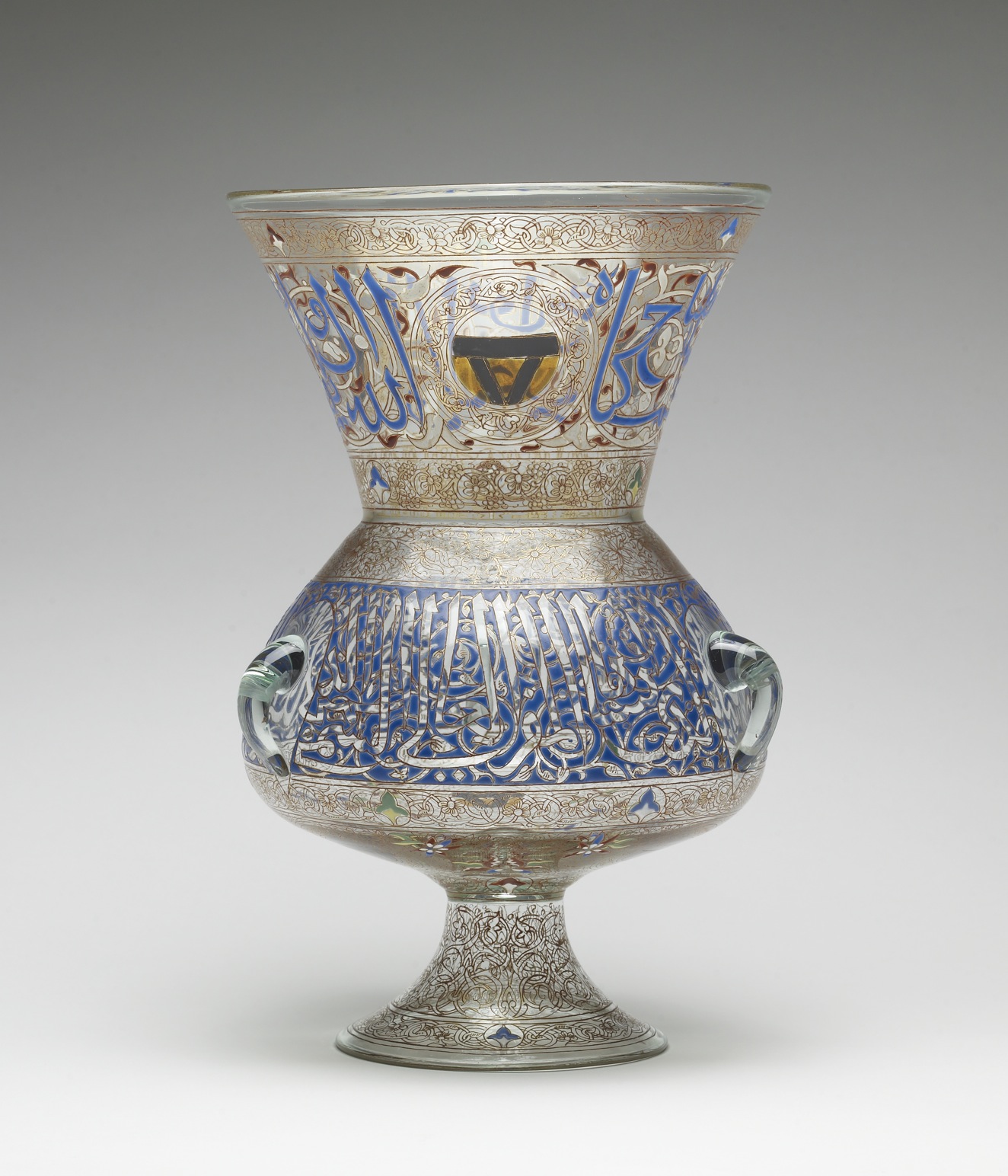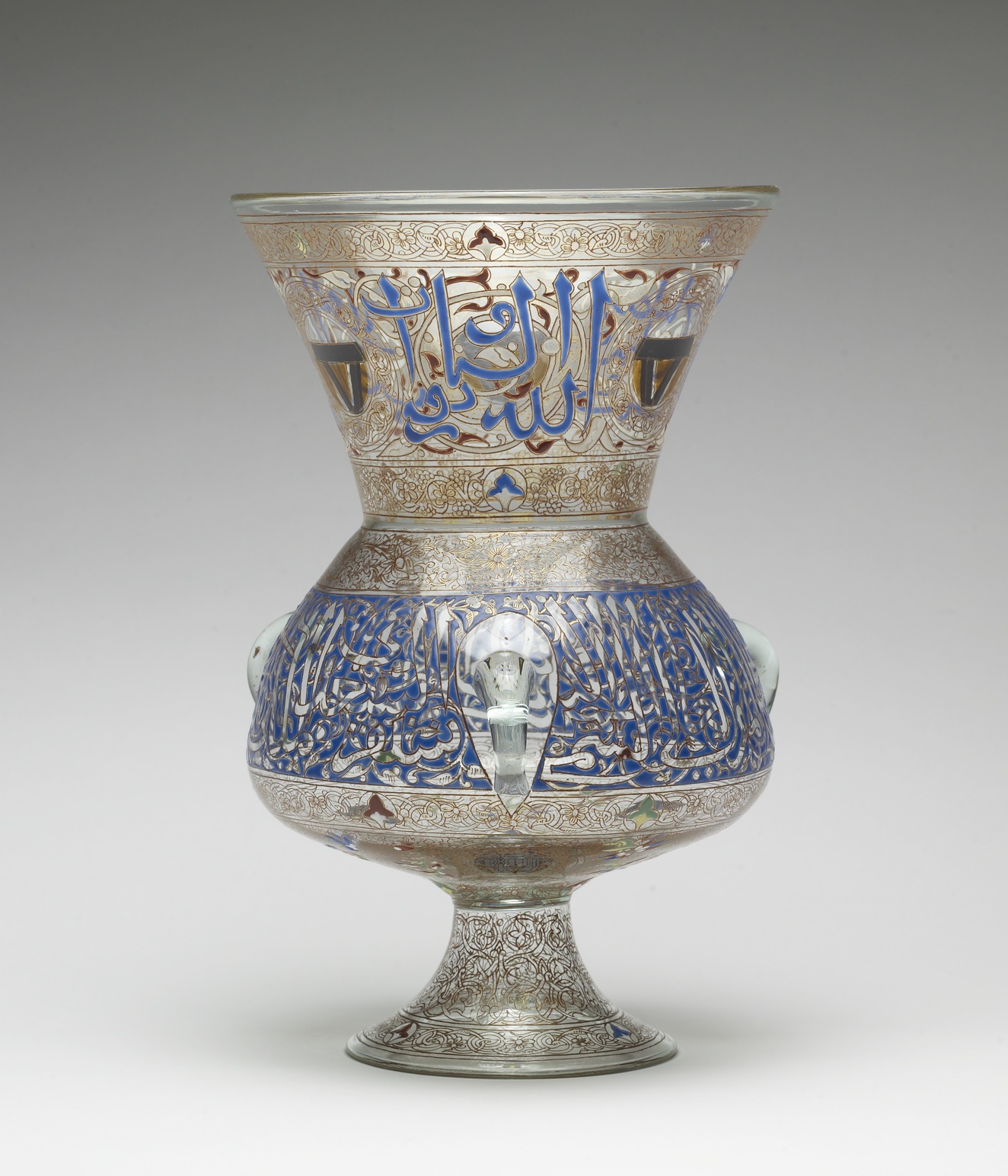Mamluk-Revival Lamp
(18th and 19th Centuries )
Joseph Phillipe Brocard was not only a glass artist, he also restored and collected historic Islamic glass, which served as inspiration for new artworks. Brocard modeled this lamp after a medieval Egyptian example from the Mamluk sultanate (begun in 1250 and conquered by the Ottomans in 1517), when enameled and gilt glass lamps reached a pinnacle of artistic achievement. In the 19th century, there was significant appreciation for Mamluk art in Europe and Egypt itself, which witnessed a "Mamluk Revival." Brocard exhibited his works at numerous international exhibitions or World's Fairs during the second half of the nineteenth century and sold from his shop located in the rue Bertrand, Paris. His works were popular among American collectors, many examples entering the country through the New York dealer and collector Samuel P. Avery.
Inscription
Provenance
Provenance (from the French provenir, 'to come from/forth') is the chronology of the ownership, custody, or location of a historical object. Learn more about provenance at the Walters.
Dr. George Krotkoff; by bequest to Walters Art Museum, 2014.
Exhibitions
| 2015-2016 | Gérôme and His Circle: Travel, Art, and Business in the Middle East. The Walters Art Museum, Baltimore. |
Conservation
| Date | Description | Narrative |
|---|---|---|
| Examination | Examined, cleaned | |
| Treatment | Examined, cleaned. | |
| Examination | Examined and cleaned in preparation for exhibition. | |
| Treatment | Examined and cleaned. |
Geographies
France, Paris (Place of Origin)
Measurements
H: 13 3/4 × Diam with handles: 9 5/16 in. (34.9 × 23.6 cm); H: 13 3/4 × Diam of rim: 8 3/4 in. (34.9 × 22.3 cm)
Credit Line
Bequest of Dr. George Krotkoff, 2014
Accession Number
In libraries, galleries, museums, and archives, an accession number is a unique identifier assigned to each object in the collection.
In libraries, galleries, museums, and archives, an accession number is a unique identifier assigned to each object in the collection.
47.742












